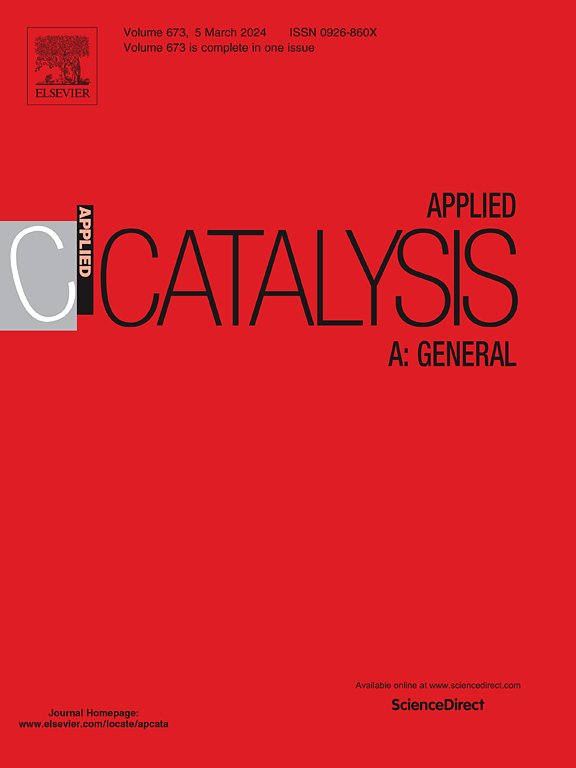具有芴-紫素单元的亲水多孔有机聚合物,用于增强光催化制氢
IF 4.7
2区 化学
Q2 CHEMISTRY, PHYSICAL
引用次数: 0
摘要
不断增长的能源需求和对环境的关切促使人们加紧寻找清洁能源的解决办法。光催化水分解提供了一条很有前途的途径,但效率仍然受到对具有增强光吸收、电荷分离和水相互作用的先进光催化剂的需求的限制。多孔有机聚合物(POPs)由于其有序的共轭结构而成为太阳能转换的高效材料。本研究探讨了酮段对芴桥接双卡巴唑- violoogen基POPs (POP-MB-TP(DCzFO)和POP-MB-TP(DCzF))亲水性和光催化析氢效率的影响。结果表明,POP-MB-TP(DCzF)的析氢速率为3.37 mmol g−1 h−1,是POP-MB-TP(DCzFO)(1.72 mmol g−1 h−1)的近两倍。这一改进突出了亲水性在电荷传输和催化效率中的作用,为设计高效的有机光催化剂用于可持续制氢提供了见解。本文章由计算机程序翻译,如有差异,请以英文原文为准。
Hydrophilic porous organic polymers with fluorene-viologen units for enhanced photocatalytic hydrogen production
The rising energy demand and environmental concerns have intensified the search for clean energy solutions. Photocatalytic water splitting offers a promising route, yet efficiency remains limited by the need for advanced photocatalysts with enhanced light absorption, charge separation, and water interaction. Porous organic polymers (POPs) are emerging as efficient materials for solar energy conversion due to their ordered conjugated structures. This study explores the impact of a ketone moiety on the hydrophilicity and photocatalytic hydrogen evolution efficiency of fluorene-bridged bicarbazole-viologen-based POPs (POP-MB-TP(DCzFO) and POP-MB-TP(DCzF)). Our results show that POP-MB-TP(DCzF) achieves a hydrogen evolution rate of 3.37 mmol g−1 h−1, nearly twice that of POP-MB-TP(DCzFO) (1.72 mmol g−1 h−1). This improvement highlights the role of hydrophilicity in charge transport and catalytic efficiency, providing insights for designing highly efficient organic photocatalysts for sustainable hydrogen production.
求助全文
通过发布文献求助,成功后即可免费获取论文全文。
去求助
来源期刊

Applied Catalysis A: General
化学-环境科学
CiteScore
9.00
自引率
5.50%
发文量
415
审稿时长
24 days
期刊介绍:
Applied Catalysis A: General publishes original papers on all aspects of catalysis of basic and practical interest to chemical scientists in both industrial and academic fields, with an emphasis onnew understanding of catalysts and catalytic reactions, new catalytic materials, new techniques, and new processes, especially those that have potential practical implications.
Papers that report results of a thorough study or optimization of systems or processes that are well understood, widely studied, or minor variations of known ones are discouraged. Authors should include statements in a separate section "Justification for Publication" of how the manuscript fits the scope of the journal in the cover letter to the editors. Submissions without such justification will be rejected without review.
 求助内容:
求助内容: 应助结果提醒方式:
应助结果提醒方式:


